Abstract
Studies were made on the abilities of Sendai virus envelope components to induce primary and secondary generations of virus-specific cytotoxic mouse T lymphocytes (CTL). The primary CTL response in BALB/c mice was induced by reassembled envelope particles that had fusion activity but not by envelope glycoproteins without fusion activity, although both preparations induced a humoral immune response. Reconstitution of membrane-bound envelope proteins from envelope glycoproteins with lipids restored the fusion activity and the capacity to induce CTL. Target cells susceptible to virus-specific CTL could be induced by reassembled envelope particles, but not by envelope glycoproteins or LLC-MK2 cell-grown Sendai virus, neither of which had fusion activity. On the other hand, all the viruses and envelope components tested were found to stimulate a virus-specific CTL response in the in vitro secondary generation of CTL from virus-primed spleen cells. These results suggest that Senaei virus fusion activity is involved in primary induction of the CTL response as well as in target cell formation, but that it is not essential for secondary stimulation of the CTL response.
Full text
PDF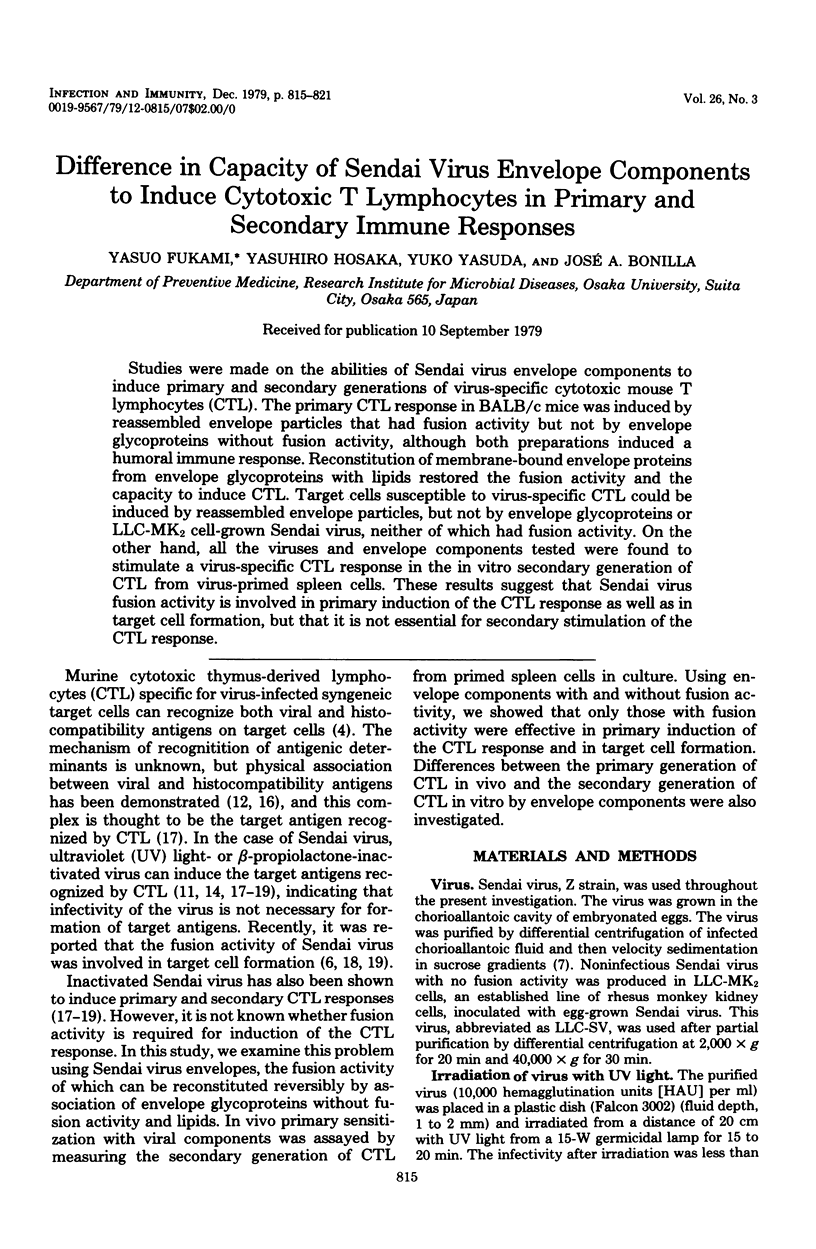
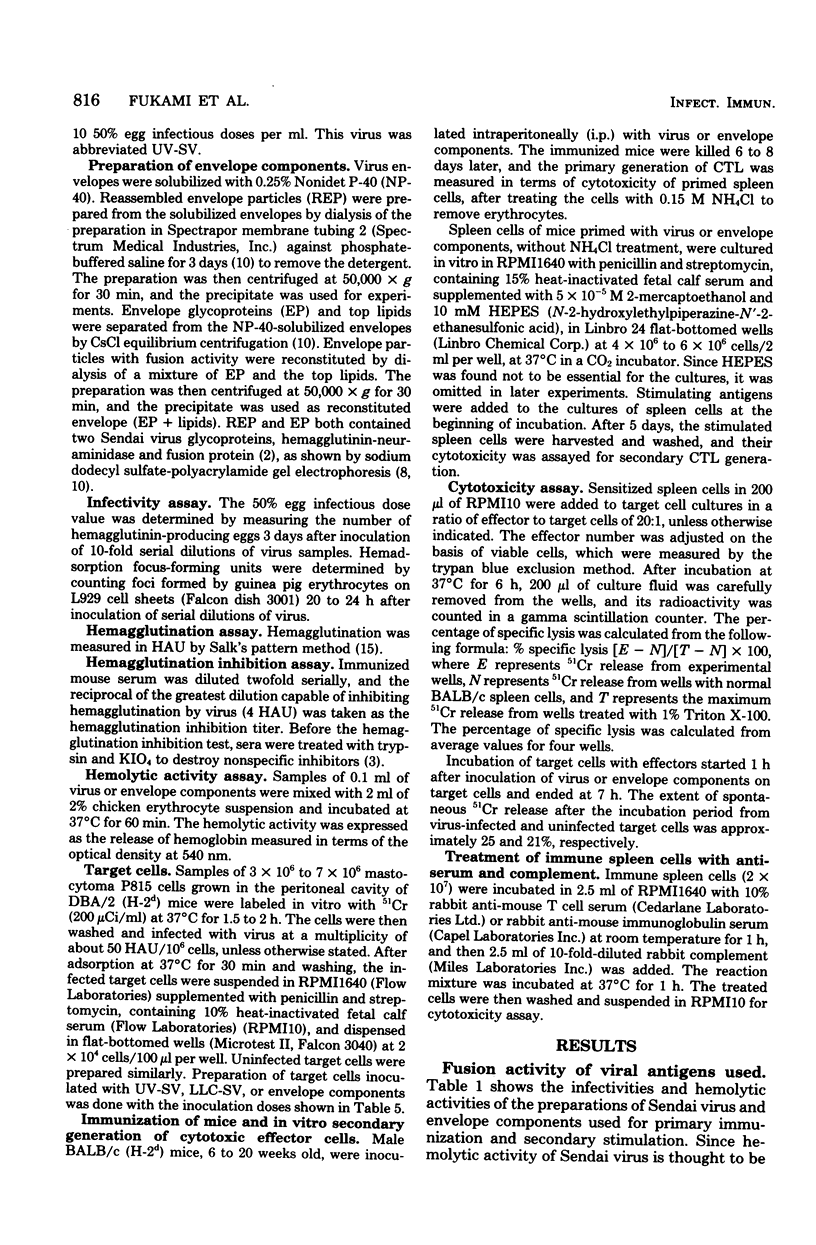
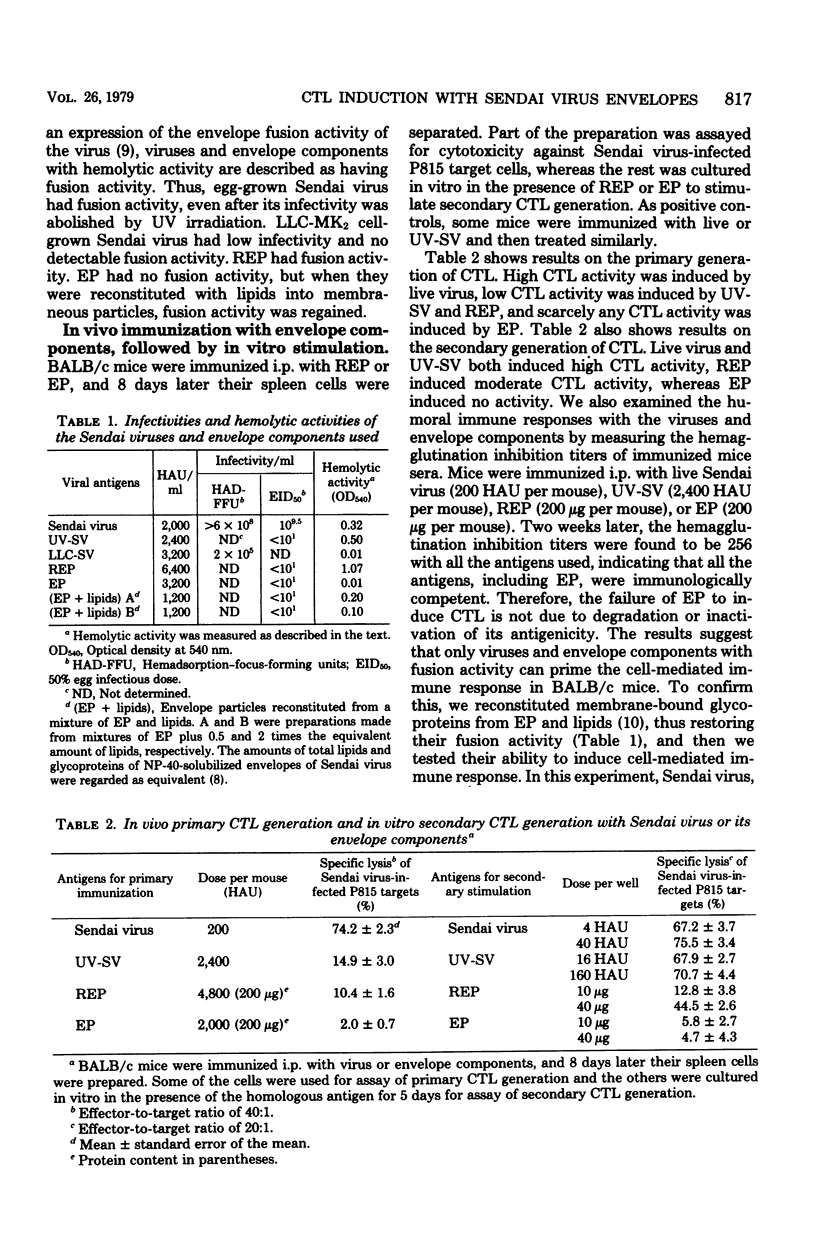
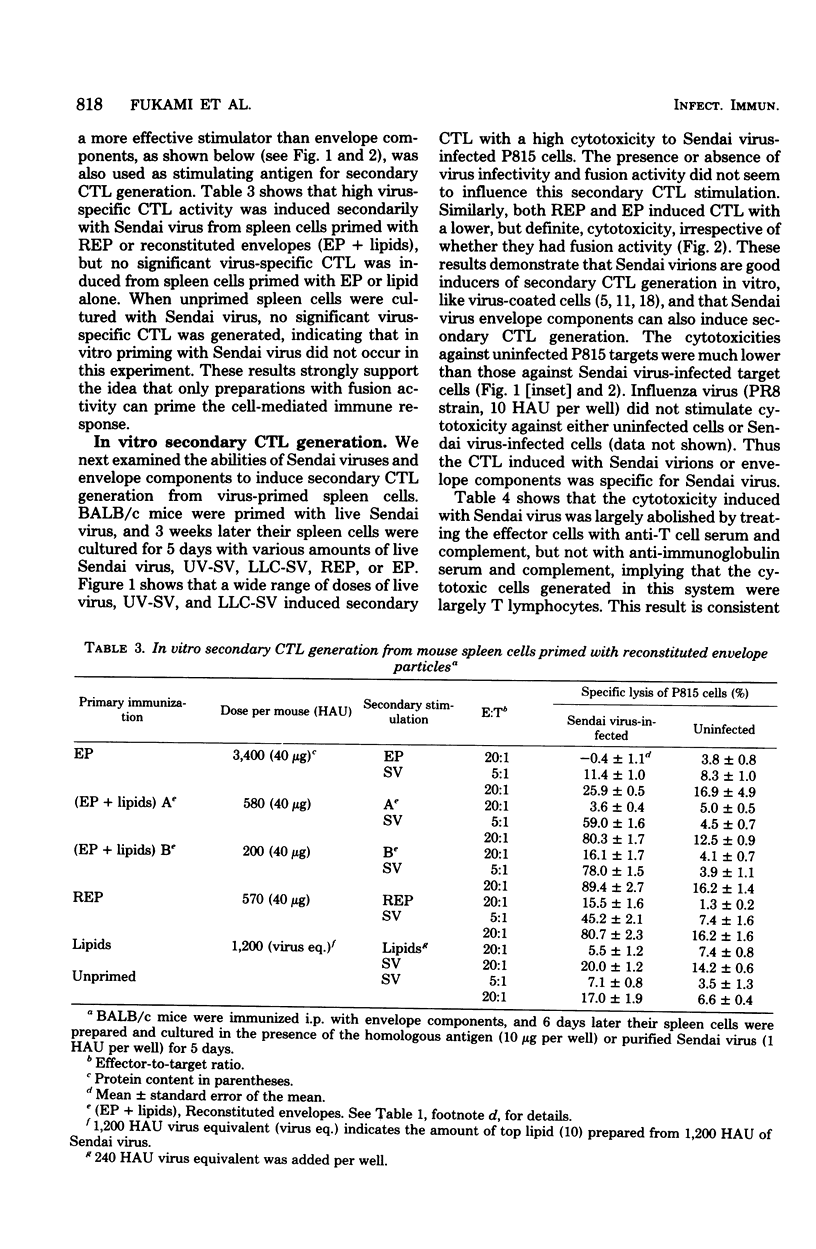
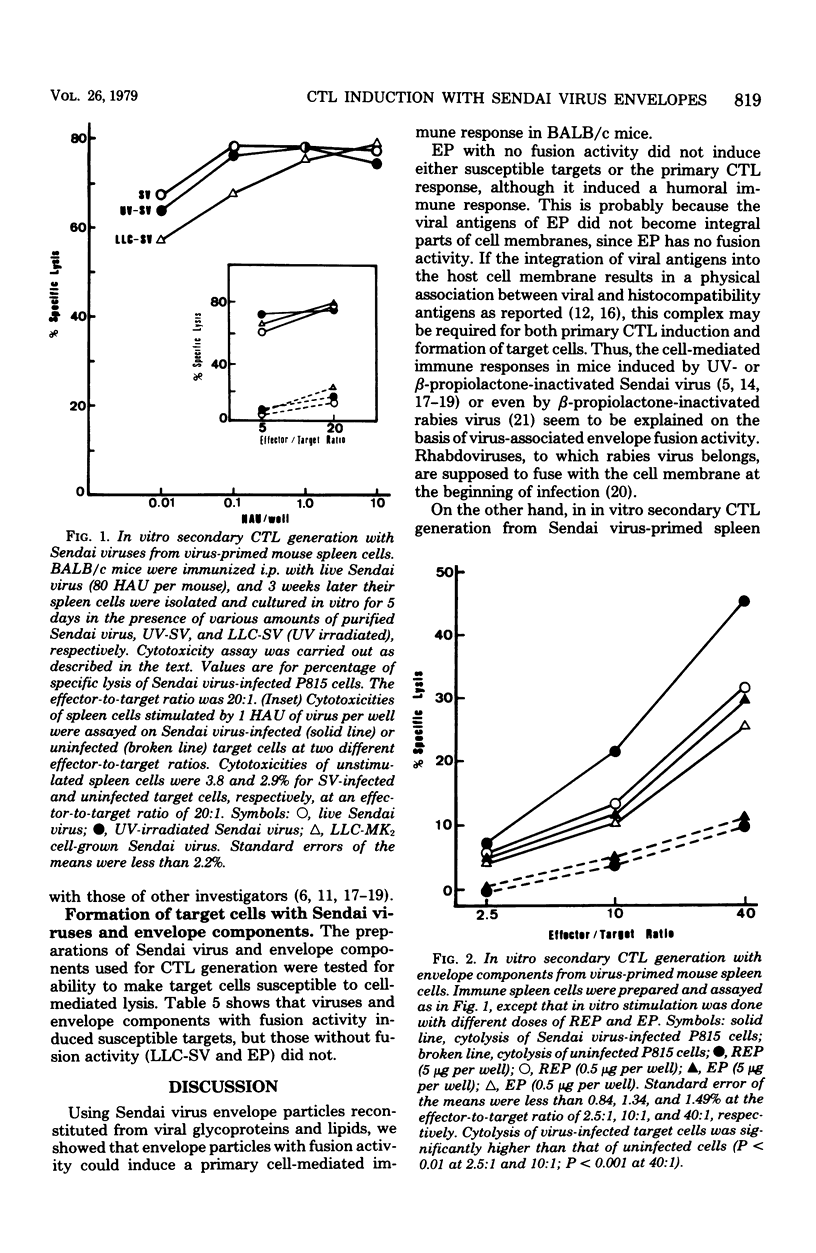
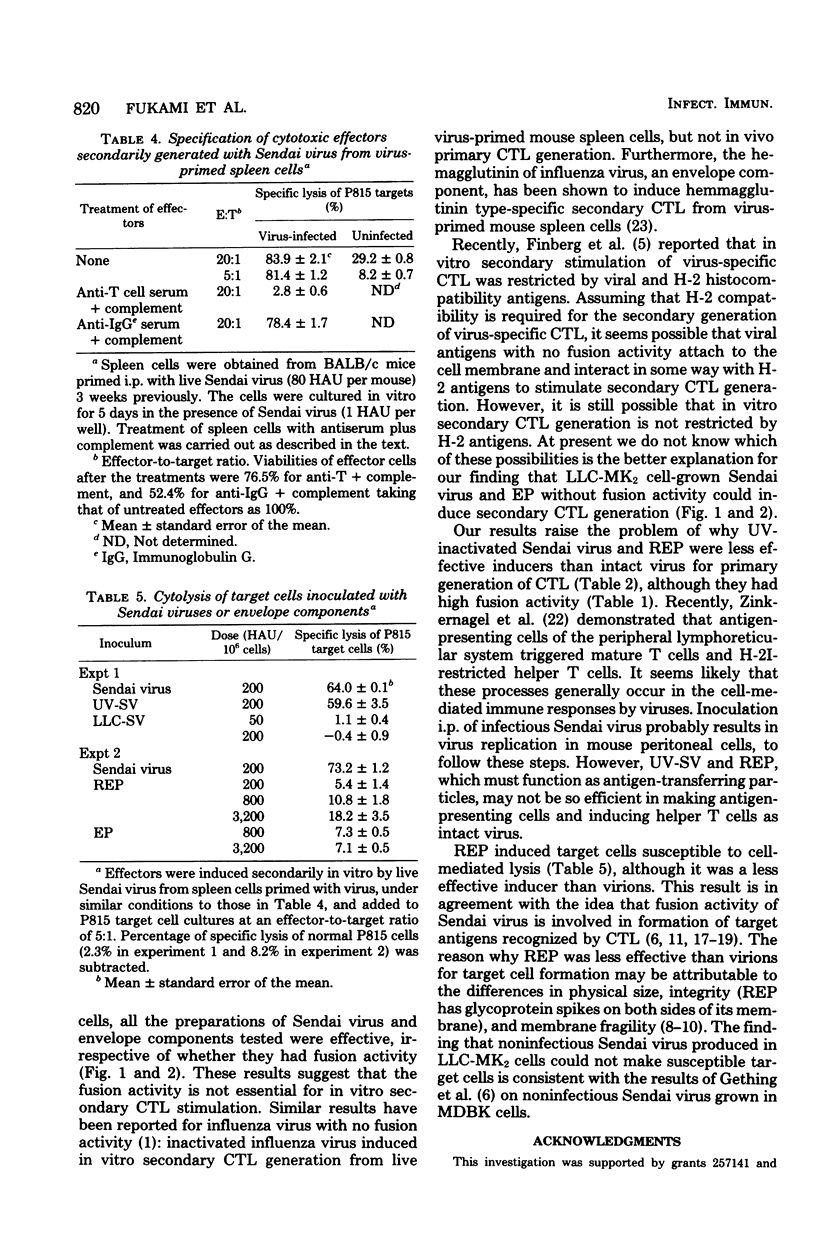
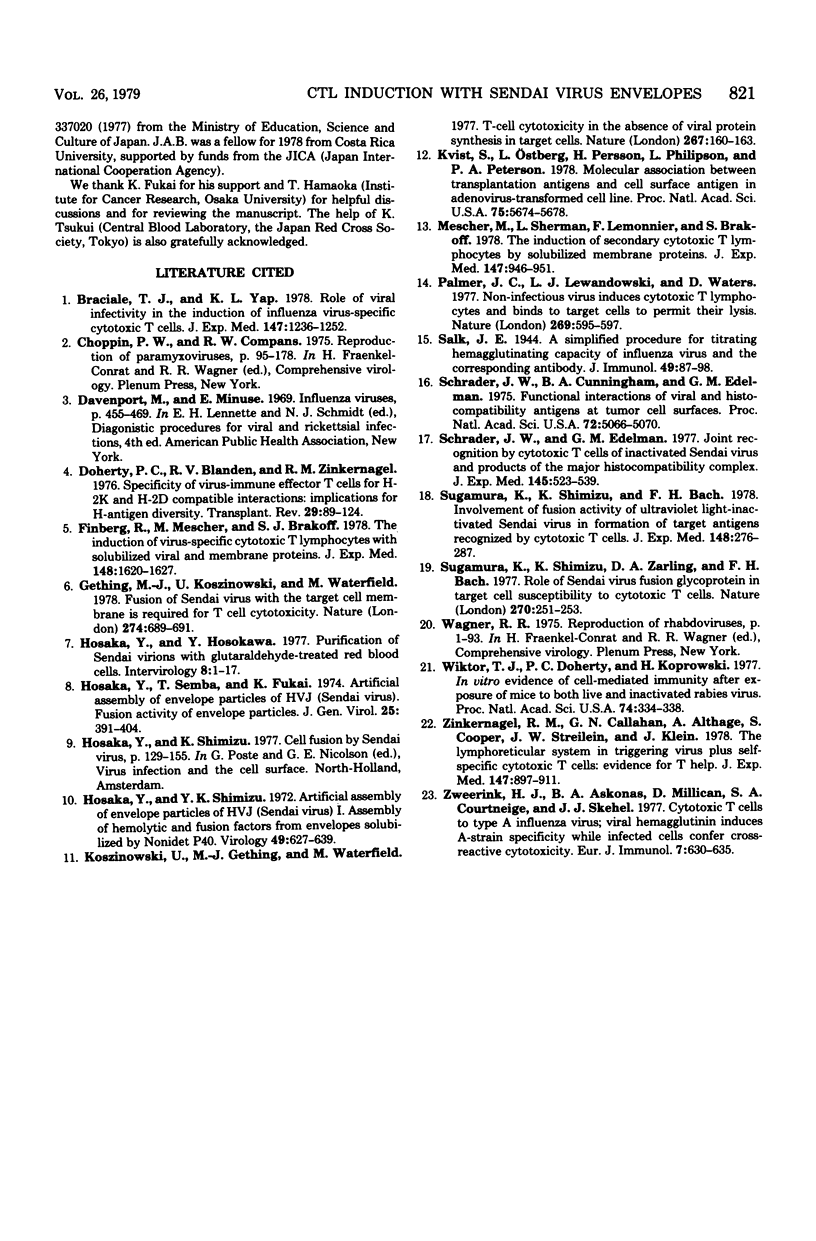
Selected References
These references are in PubMed. This may not be the complete list of references from this article.
- Braciale T. J., Yap K. L. Role of viral infectivity in the induction of influenza virus-specific cytotoxic T cells. J Exp Med. 1978 Apr 1;147(4):1236–1252. doi: 10.1084/jem.147.4.1236. [DOI] [PMC free article] [PubMed] [Google Scholar]
- Doherty P. C., Blanden R. V., Zinkernagel R. M. Specificity of virus-immune effector T cells for H-2K or H-2D compatible interactions: implications for H-antigen diversity. Transplant Rev. 1976;29:89–124. doi: 10.1111/j.1600-065x.1976.tb00198.x. [DOI] [PubMed] [Google Scholar]
- Finberg R., Mescher M., Burakoff S. J. The induction of virus-specific cytotoxic T lymphocytes with solubilized viral and membrane proteins. J Exp Med. 1978 Dec 1;148(6):1620–1627. doi: 10.1084/jem.148.6.1620. [DOI] [PMC free article] [PubMed] [Google Scholar]
- Gething M., Koszinowski U., Waterfield M. Fusion of Sendai virus with the target cell membrane is required for T cell cytotoxicity. Nature. 1978 Aug 17;274(5672):689–691. doi: 10.1038/274689a0. [DOI] [PubMed] [Google Scholar]
- Hosaka Y., Hosokawa Y. Purification of Sendai virions with glutaraldehyde-treated red blood cells. Intervirology. 1977;8(1):1–17. doi: 10.1159/000148872. [DOI] [PubMed] [Google Scholar]
- Hosaka Y., Semba T., Fukai K. Artificial assembly of envelope particles of HVJ (Sendai virus). Fusion activity of envelope particles. J Gen Virol. 1974 Dec;25(3):391–404. doi: 10.1099/0022-1317-25-3-391. [DOI] [PubMed] [Google Scholar]
- Hosaka Y., Shimizu Y. K. Artificial assembly of envelope particles of HVJ (Sendai virus). I. Assembly of hemolytic and fusion factors from envelopes solubilized by Nonidet P40. Virology. 1972 Sep;49(3):627–639. doi: 10.1016/0042-6822(72)90519-3. [DOI] [PubMed] [Google Scholar]
- Koszinowski U., Gething M. J., Waterfield M. T-cell cytotoxicity in the absence of viral protein synthesis in target cells. Nature. 1977 May 12;267(5607):160–163. doi: 10.1038/267160a0. [DOI] [PubMed] [Google Scholar]
- Kvist S., Ostberg L., Persson H., Philipson L., Peterson P. A. Molecular association between transplantation antigens and cell surface antigen in adenovirus-transformed cell line. Proc Natl Acad Sci U S A. 1978 Nov;75(11):5674–5678. doi: 10.1073/pnas.75.11.5674. [DOI] [PMC free article] [PubMed] [Google Scholar]
- Mescher M., Sherman L., Lemonnier F., Burakoff S. The induction of secondary cytolytic T lymphocytes by solubilized membrane proteins. J Exp Med. 1978 Mar 1;147(3):946–951. doi: 10.1084/jem.147.3.946. [DOI] [PMC free article] [PubMed] [Google Scholar]
- Palmer J. C., Lewandowski L. J., Waters D. Non-infectious virus induces cytotoxic T lymphocytes and binds to target cells to permit their lysis. Nature. 1977 Oct 13;269(5629):595–597. doi: 10.1038/269595a0. [DOI] [PubMed] [Google Scholar]
- Schrader J. W., Cunningham B. A., Edelman G. M. Functional interactions of viral and histocompatibility antigens at tumor cell surfaces. Proc Natl Acad Sci U S A. 1975 Dec;72(12):5066–5070. doi: 10.1073/pnas.72.12.5066. [DOI] [PMC free article] [PubMed] [Google Scholar]
- Schrader J. W., Edelman G. M. Joint recognition by cytotoxic T cells of inactivated Sendai virus and products of the major histocompatibility complex. J Exp Med. 1977 Mar 1;145(3):523–539. doi: 10.1084/jem.145.3.523. [DOI] [PMC free article] [PubMed] [Google Scholar]
- Sugamura K., Shimizu K., Bach F. H. Involvement of fusion activity of ultraviolet light-inactivated Sendai virus in formation of target antigens recognized by cytotoxic T cells. J Exp Med. 1978 Jul 1;148(1):276–287. doi: 10.1084/jem.148.1.276. [DOI] [PMC free article] [PubMed] [Google Scholar]
- Sugamura K., Shimizu K., Zarling D. A., Bach F. H. Role of sendai virus fusion-glycoprotein in target cell susceptibility to cytotoxic T cells. Nature. 1977 Nov 17;270(5634):251–253. doi: 10.1038/270251a0. [DOI] [PubMed] [Google Scholar]
- Wiktor T. J., Doherty P. C., Koprowski H. In vitro evidence of cell-mediated immunity after exposure of mice to both live and inactivated rabies virus. Proc Natl Acad Sci U S A. 1977 Jan;74(1):334–338. doi: 10.1073/pnas.74.1.334. [DOI] [PMC free article] [PubMed] [Google Scholar]
- Zinkernagel R. M., Callahan G. N., Althage A., Cooper S., Streilein J. W., Klein J. The lymphoreticular system in triggering virus plus self-specific cytotoxic T cells: evidence for T help. J Exp Med. 1978 Mar 1;147(3):897–911. doi: 10.1084/jem.147.3.897. [DOI] [PMC free article] [PubMed] [Google Scholar]
- Zweerink H. J., Askonas B. A., Millican D., Courtneidge S. A., Skehel J. J. Cytotoxic T cells to type A influenza virus; viral hemagglutinin induces A-strain specificity while infected cells confer cross-reactive cytotoxicity. Eur J Immunol. 1977 Sep;7(9):630–635. doi: 10.1002/eji.1830070910. [DOI] [PubMed] [Google Scholar]


